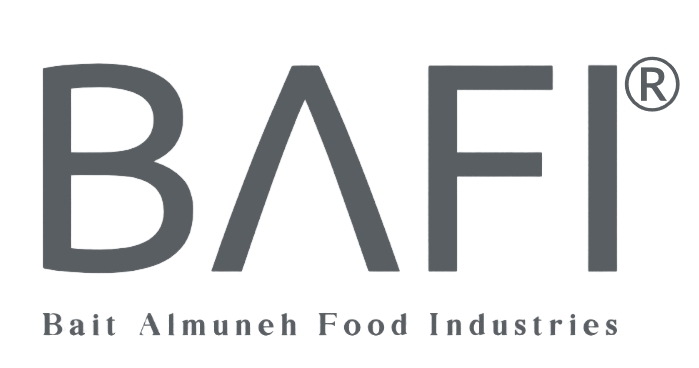-
Cold Storage: Manufacturers store packaged French fries in cold storage facilities like freezer warehouses or distribution centers to maintain their frozen state and quality.
-
Transportation: Companies transport frozen French fries in refrigerated trucks or containers, keeping them frozen throughout transit. They use temperature monitoring systems to maintain the cold chain and prevent thawing.
-
Retail Display: Retailers display packaged French fries in freezer aisles or refrigerated displays for consumer purchase. They may use eye-catching packaging and promotional materials to attract customers.
Environmental Considerations:
-
Sustainability: BAFI® may choose eco-friendly packaging materials like recyclable or biodegradable plastics to lower environmental impact. Additionally, this meets consumer demand for sustainable packaging.
-
Reducing Waste: BAFI® uses efficient packaging designs and portion control to help reduce food waste and optimize storage space. This approach minimizes the environmental footprint of French fry production and distribution.
Conclusion:
Packaging plays a critical role in the French fries production process. It protects, labels, and prepares the frozen fries for distribution to consumers and food service establishments. By using proper techniques and selecting suitable materials, manufacturers deliver high-quality fries that meet consumer expectations for convenience, freshness, and sustainability.
We have partnerships with the best suppliers in the United States, Europe countries of Germany, Italy, Spain and the Netherlands.
we design your requirements according to the size of your business, your markets, and future expansion prospects.
For food indistry solutions we can be considered one of the best in the Middle East and North Africa.
-
Automatic Packaging: Automated machinery packages frozen French fries by weighing, filling, and sealing the bags or pouches with minimal manual intervention. This process ensures efficiency and consistency.
-
Quality Control: Operators perform quality control during packaging to ensure the fries meet size, shape, and appearance specifications. They also remove defective or substandard fries before packaging.
-
Labeling and Coding: Operators label each package with product information, including the name, weight, ingredients, nutritional facts, and expiration date. They may also apply barcodes or QR codes for tracking and traceability.
Storage and Distribution:
-
Cold Storage: Manufacturers store packaged French fries in cold storage facilities like freezer warehouses or distribution centers to maintain their frozen state and quality.
-
Transportation: Companies transport frozen French fries in refrigerated trucks or containers, keeping them frozen throughout transit. They use temperature monitoring systems to maintain the cold chain and prevent thawing.
-
Retail Display: Retailers display packaged French fries in freezer aisles or refrigerated displays for consumer purchase. They may use eye-catching packaging and promotional materials to attract customers.
Environmental Considerations:
-
Sustainability: BAFI® may choose eco-friendly packaging materials like recyclable or biodegradable plastics to lower environmental impact. Additionally, this meets consumer demand for sustainable packaging.
-
Reducing Waste: BAFI® uses efficient packaging designs and portion control to help reduce food waste and optimize storage space. This approach minimizes the environmental footprint of French fry production and distribution.
Conclusion:
Packaging plays a critical role in the French fries production process. It protects, labels, and prepares the frozen fries for distribution to consumers and food service establishments. By using proper techniques and selecting suitable materials, manufacturers deliver high-quality fries that meet consumer expectations for convenience, freshness, and sustainability.
We have partnerships with the best suppliers in the United States, Europe countries of Germany, Italy, Spain and the Netherlands.
we design your requirements according to the size of your business, your markets, and future expansion prospects.
For food indistry solutions we can be considered one of the best in the Middle East and North Africa.
-
Polyethylene Bags: Manufacturers commonly use polyethylene bags for frozen French fries. These bags protect against moisture and freezer burn, maintaining product quality.
-
Cartons: Manufacturers use cardboard cartons or boxes for bulk packaging of French fries. These cartons provide stackability and protection during storage and transportation.
-
Pouches: Individual or portion-sized pouches hold smaller quantities of French fries. This packaging makes it convenient for both consumers and food service establishments.
Packaging Process:
-
Automatic Packaging: Automated machinery packages frozen French fries by weighing, filling, and sealing the bags or pouches with minimal manual intervention. This process ensures efficiency and consistency.
-
Quality Control: Operators perform quality control during packaging to ensure the fries meet size, shape, and appearance specifications. They also remove defective or substandard fries before packaging.
-
Labeling and Coding: Operators label each package with product information, including the name, weight, ingredients, nutritional facts, and expiration date. They may also apply barcodes or QR codes for tracking and traceability.
Storage and Distribution:
-
Cold Storage: Manufacturers store packaged French fries in cold storage facilities like freezer warehouses or distribution centers to maintain their frozen state and quality.
-
Transportation: Companies transport frozen French fries in refrigerated trucks or containers, keeping them frozen throughout transit. They use temperature monitoring systems to maintain the cold chain and prevent thawing.
-
Retail Display: Retailers display packaged French fries in freezer aisles or refrigerated displays for consumer purchase. They may use eye-catching packaging and promotional materials to attract customers.
Environmental Considerations:
-
Sustainability: BAFI® may choose eco-friendly packaging materials like recyclable or biodegradable plastics to lower environmental impact. Additionally, this meets consumer demand for sustainable packaging.
-
Reducing Waste: BAFI® uses efficient packaging designs and portion control to help reduce food waste and optimize storage space. This approach minimizes the environmental footprint of French fry production and distribution.
Conclusion:
Packaging plays a critical role in the French fries production process. It protects, labels, and prepares the frozen fries for distribution to consumers and food service establishments. By using proper techniques and selecting suitable materials, manufacturers deliver high-quality fries that meet consumer expectations for convenience, freshness, and sustainability.
We have partnerships with the best suppliers in the United States, Europe countries of Germany, Italy, Spain and the Netherlands.
we design your requirements according to the size of your business, your markets, and future expansion prospects.
For food indistry solutions we can be considered one of the best in the Middle East and North Africa.
Packaging is the final step in the French fries production process, where manufacturers pack the frozen fries into suitable containers for storage, transportation, and retail sale. Here’s a closer look at how manufacturers handle the packaging process for French fries:
Packaging Materials:
-
Polyethylene Bags: Manufacturers commonly use polyethylene bags for frozen French fries. These bags protect against moisture and freezer burn, maintaining product quality.
-
Cartons: Manufacturers use cardboard cartons or boxes for bulk packaging of French fries. These cartons provide stackability and protection during storage and transportation.
-
Pouches: Individual or portion-sized pouches hold smaller quantities of French fries. This packaging makes it convenient for both consumers and food service establishments.
Packaging Process:
-
Automatic Packaging: Automated machinery packages frozen French fries by weighing, filling, and sealing the bags or pouches with minimal manual intervention. This process ensures efficiency and consistency.
-
Quality Control: Operators perform quality control during packaging to ensure the fries meet size, shape, and appearance specifications. They also remove defective or substandard fries before packaging.
-
Labeling and Coding: Operators label each package with product information, including the name, weight, ingredients, nutritional facts, and expiration date. They may also apply barcodes or QR codes for tracking and traceability.
Storage and Distribution:
-
Cold Storage: Manufacturers store packaged French fries in cold storage facilities like freezer warehouses or distribution centers to maintain their frozen state and quality.
-
Transportation: Companies transport frozen French fries in refrigerated trucks or containers, keeping them frozen throughout transit. They use temperature monitoring systems to maintain the cold chain and prevent thawing.
-
Retail Display: Retailers display packaged French fries in freezer aisles or refrigerated displays for consumer purchase. They may use eye-catching packaging and promotional materials to attract customers.
Environmental Considerations:
-
Sustainability: BAFI® may choose eco-friendly packaging materials like recyclable or biodegradable plastics to lower environmental impact. Additionally, this meets consumer demand for sustainable packaging.
-
Reducing Waste: BAFI® uses efficient packaging designs and portion control to help reduce food waste and optimize storage space. This approach minimizes the environmental footprint of French fry production and distribution.
Conclusion:
Packaging plays a critical role in the French fries production process. It protects, labels, and prepares the frozen fries for distribution to consumers and food service establishments. By using proper techniques and selecting suitable materials, manufacturers deliver high-quality fries that meet consumer expectations for convenience, freshness, and sustainability.
We have partnerships with the best suppliers in the United States, Europe countries of Germany, Italy, Spain and the Netherlands.
we design your requirements according to the size of your business, your markets, and future expansion prospects.
For food indistry solutions we can be considered one of the best in the Middle East and North Africa.


